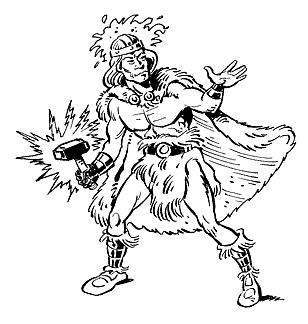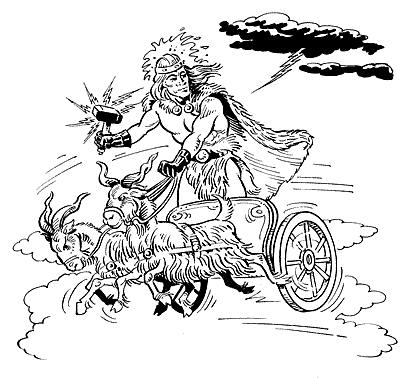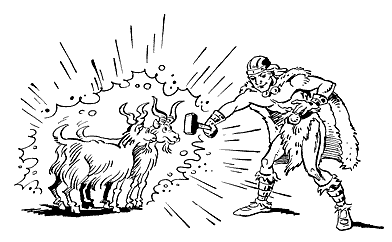Calendar, Anglo-Saxon Thorsdaeg
(Thursdaeg, an Anglo-Saxon name for Thursday)
A Scandinavian thunder-and-lightning god, corresponding to Rome’s Jove is why the Latin dies jovis, Jove’s Day, became Thursday (Thor’s Day).
- In the 7th century, a Bishop Eligius scolded Christians for observing Thursday as the holy day of Thor; yet even 500 years later, Thor’s hammers were still revered in temples as sacred relics and sources of thunder.
- Thor was also known as Thuner, Thunar, Donar, and Thur. Considered one of the greatest of the gods, he was the god of yeomen and peasants as opposed to Odin, who was believed to be a god of the nobility.
- While upper class society of royalty looked to Woden as its principal god, a society which was composed of independent warriors who relied more on physical force than on cunning or birth, looked to Donar as their guide and protector.
- As the god of thunder, Thor was responsible for bringing the rains which were needed for crops.
- In many localities, especially in North Germany, no work was done on Thor’s day.
- The Normans, who called him Thur, sacrificed to him before a long sea voyage to insure success and favorable winds.
- The Saxons called him Thunaer, and the Anglo-Saxons, Thunar. In most of Germany he was called Donar.
- Thor is listed as a son of Odin and Frigga. He had the marvelous hammer Mieo, or Mjeollnir, (meaning “The Destroyer”, a symbol of the thunderbolt) which, when thrown, returned to his hand.
- He had an iron glove, Iarn Greiper, which allowed him to handle his hammer even when it was red-hot.
- In certain Northern countries, particularly in Norway, Thor (the German Donar) had the most richly ornamented altars.
- Many Norwegian peasants gave their children the name Thor in order to place them under his protection.
- The chariot which he drove across the sky was regarded as causing the rumble of thunder and was drawn by two male-goats, Tanngniortr and Tanngrisnr (also known as “Tooth-gnasher” and “Gap-tooth”).
- If in the course of his travels, when Thor was overtaken by hunger, he would kill and cook the goats; but the next day he merely placed his sacred hammer on the hides of the dead beasts and they would leap to their feet again, alive and ready for traveling.



Time is a circus always packing up and moving away.
